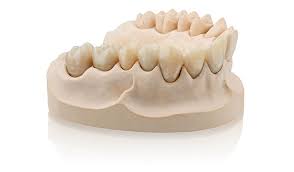Transforming Dentistry: The Power of CBCT in the Dental Field
-
Enhanced Diagnostic Capabilities: CBCT provides highly detailed 3D images of the oral structures, surpassing traditional dental x-rays in terms of precision and diagnostic capabilities. With CBCT scans, dental professionals can visualize anatomical structures, detect abnormalities, assess bone density, and identify hidden conditions that may not be visible in 2D imaging. This advanced level of diagnostic information enables more accurate treatment planning and better patient outcomes.
-
Comprehensive Treatment Planning: The detailed 3D images generated by CBCT allow dental professionals to plan treatments with unparalleled accuracy. Whether it's implant placement, orthodontic planning, or endodontic procedures, CBCT scans provide vital information about bone density, root morphology, and adjacent anatomical structures. This helps dental practitioners create precise treatment plans tailored to each patient's unique needs, resulting in more successful and predictable outcomes.
-
Minimally Invasive Procedures: CBCT enables dental professionals to perform minimally invasive procedures by offering a comprehensive understanding of the patient's oral anatomy. With detailed 3D images, dentists can identify the exact location of nerves, blood vessels, and other critical structures, minimizing the risk of accidental damage during procedures. This precision allows for conservative approaches, preserving healthy tissues and reducing post-operative complications.
-
Improved Patient Communication and Education: CBCT scans provide patients with a clear visual representation of their oral condition, making it easier for dental professionals to explain diagnoses, treatment options, and potential outcomes. Patients can see their dental issues firsthand, facilitating a better understanding of the proposed treatments. This visual communication enhances patient education, increases treatment acceptance rates, and fosters a sense of trust and confidence in the dental team.
-
Collaboration and Interdisciplinary Care: CBCT scans can be easily shared between dental professionals and specialists, promoting seamless collaboration and interdisciplinary care. Orthodontists, oral surgeons, periodontists, and other specialists can access the same detailed images, leading to more coordinated and comprehensive treatment plans. This interdisciplinary approach improves patient outcomes and ensures a higher standard of care.
-
Reduced Radiation Exposure: While CBCT scans emit slightly more radiation than traditional dental x-rays, the technology has made significant strides in reducing radiation dosage. Modern CBCT machines utilize lower radiation levels while still producing high-quality images. Additionally, the focused nature of CBCT scans minimizes radiation exposure to areas outside the region of interest, ensuring patient safety.
Conclusion: Cone Beam Computed Tomography (CBCT) has brought about a paradigm shift in the dental industry, offering advanced imaging capabilities that enhance diagnosis, treatment planning, and patient care. With its precise 3D imaging, CBCT empowers dental professionals to deliver more accurate diagnoses, perform minimally invasive procedures, improve patient communication, facilitate interdisciplinary collaboration, and ultimately elevate the standard of dental care. As CBCT continues to evolve and become more accessible, its impact on the dental industry is set to expand further, promising a future of enhanced diagnostics, superior treatment outcomes, and improved patient experiences.



